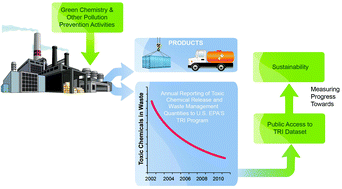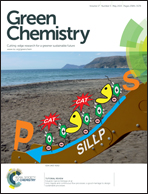Can pollutant release and transfer registers (PRTRs) be used to assess implementation and effectiveness of green chemistry practices? A case study involving the Toxics Release Inventory (TRI) and pharmaceutical manufacturers
Abstract
Pharmaceutical firms have reported that implementation of green chemistry practices in their manufacturing processes have significantly reduced the quantities of toxic chemicals they use, release to the environment, or otherwise manage as waste. Using the United States Environmental Protection Agency's (EPA's) Toxics Release Inventory (TRI) database and literature publications, we conducted research to assess this claim. Our analyses show that over the 2002 through 2011 timeframe the quantities of toxic chemicals reported annually by pharmaceutical manufacturing facilities to EPA's TRI Program as released to the environment or otherwise managed as waste have declined steadily and by more than 60%. The large reductions in the reported quantities are sector-wide, and it appears that factors such as outsourcing, production levels, regulations, shifts to other waste management practices, or TRI reporting characteristics by the larger pharmaceutical firms are not driving the decline. Our analyses, combined with the extensive evidence in the literature of green chemistry advances within the pharma sector, lead us to conclude that implementation of green chemistry practices is a major contributing factor to the large reductions we report herein. We believe the TRI, an easy-to-use pollution prevention tool used extensively for tracking environmental performance, is uniquely well-suited for assessing the progress made by different industry sectors or specific facilities therein in implementing green chemistry practices and the effectiveness that such practices have in preventing pollution: uses of the TRI that hitherto have not been reported. Moreover, our findings indicate that other pollutant release and transfer registers (PRTRs) may have the potential to be used for these purposes as well.


 Please wait while we load your content...
Please wait while we load your content...